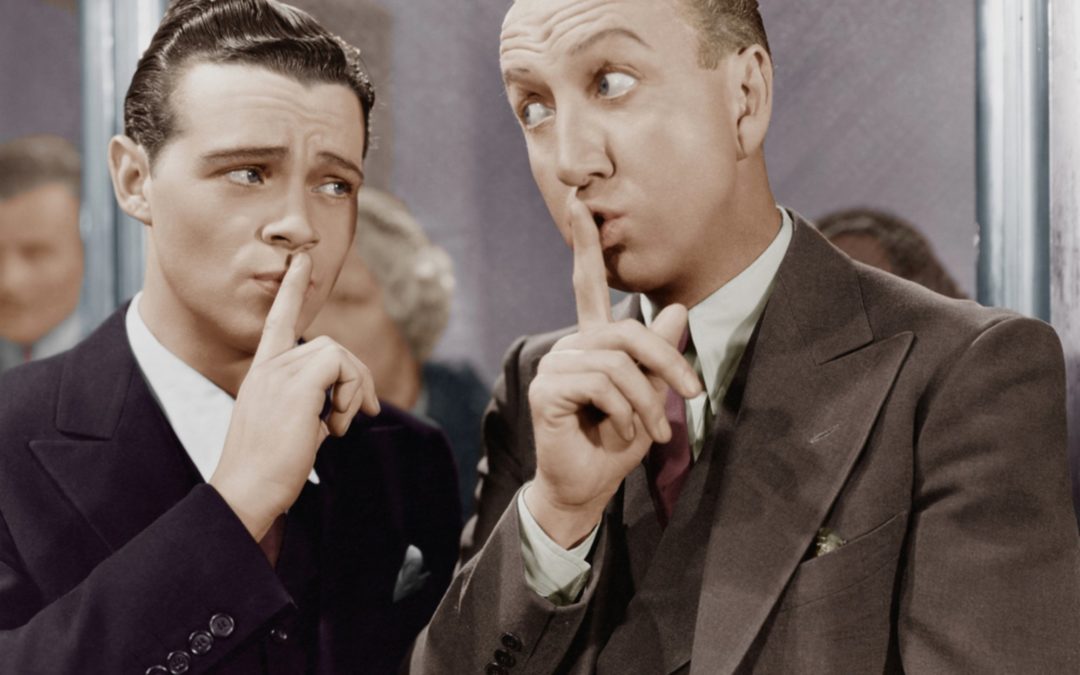A young sales rep asked me recently to explain the differences between the B2B sales profession these days, by comparison with the heyday of technology sales. I’m not sure if my grey hair had given him the mistaken assumption I’d begun my career when IBM was still called International Business Machines and door-to-door salesmen roamed the country, selling their wares from leather suitcases.
Once I’d clarified that the ‘good old days’ for me dated back to the late 90’s and early 2000’s, I began to reflect on some of the most significant changes I’d observed over the intervening years. Back in my day (and yes I appreciate how old that makes me sound) your primary job as a salesperson was to educate prospective customers on your product or service and explain how it could make their life or the operations of their company, easier and better.
There was no internet to look up details about the competition or validate the promises you were getting from vendors. Prospects couldn’t easily ascertain which of their peers were already using a solution nor could they place an order online. In reality many salespeople in those days were little more than human brochures, parroting information about product specs, facts, features and benefits.
It feels to me now, looking back through my rose tinted and somewhat myopic glasses, that quota attainment was easier back then too, because the competitive landscape was smaller, without the dual forces of globalisation and technological disruption at play. There were times where it genuinely felt like the biggest barrier to making a sale was whether the fax machine had been loaded with paper that morning.
Make no mistake, the world of professional selling has shifted on its axis since then. With the advent of the internet, sales has undergone the biggest shift toward consumer empowerment that has ever or will ever occur. As Daniel Pink explains so eloquently in his book To Sell Is Human “we’ve moved from a world of buyer beware, to a world of seller beware” and that is a great outcome for customers everywhere. We’ve reached a point where an informed consumer can access a wide array of research at the touch of a button, consult widely with peers in their industry in real time and make purchases through online portals, without the need to engage with any human along the way, let alone an annoying salesperson.
Thanks, internet. Thanks a lot!
For the new salesperson, learning outdated techniques of selling, as so many new sales hires continue to do across the world, could potentially doom their career before it ever gets started. Rather than seasoned sales professionals mentoring raw recruits, we might be better inverting this model and allowing reverse mentorship to become the order of the day in sales, with millennials whipping us grey nomads into shape instead.
So if everything has changed, if the power resides with our customers now, it begs the question, how can you still be successful in B2B sales? Or in fact a better question:
What do sales prospects really want from us now?
The key to success in sales has always been to give the client what they want, when they want it. But today that means a lot more than it did in the past. Here’s what one customer recently posted on LinkedIn about what constitutes “The Consummate Salesman” from his perspective … it makes for very interesting reading. Here’s a quick list of what I hear when I interview C-suite decision makers regarding their expectations:
1. Professionalism
Professional interactions with customers extend beyond a solo discussion with a sales executive. Now those professional interactions extend across websites, on blogs and social media, webcasts, in fact right across the analogue and digital worlds. Trust takes so long to build, but a single slip, breakdown in communication or inauthentic gesture, can undo all of your hard work.
2. Listen, understand and then take action
Customer communication must extend beyond a customer satisfaction survey, if you want it to mean something. To retain customer loyalty in today’s hyper competitive market, a two-way dialogue is needed that includes listening and responding to consumer concerns and suggestions in close to real-time. If that sounds a little vague or consultative, this excerpt from Entrepreneur.com may just serve to persuade you.
“Jeff Bezos (founder and CEO of Amazon) is famous for leaving an empty chair at the conference table and letting attendees know it’s occupied by the “the most important person in the room” – the customer. He backs up that symbolism with an array of metrics, 80% of which relate to what customers care about. Customer-centric business leaders excel at institutionalizing these five habits:
- Listen to what customers value and seek their feedback on their experiences.
- Think objectively to make sound, fact-based decisions.
- Empower employees with the resources they need to please customers.
- Create new value for customers, without being asked.
- Delight customers by exceeding their expectations.
3. Consistency and reliability
From their first interaction with a sales executive to the contract and the service provided, each interaction with new customers should build upon the last, with the ultimate goal of exceeding expectations. To succeed today, your entire organisation must offer a consistent culture of excellence from start to finish.
4. Personalisation
This is just a fancy marketing term for really getting to know your customers. From a web experience tailored to their personal preferences, all the way to the back-end provisioning, the goal is to connect in a meaningful way to their problems and how your products can solve them. Sales personalisation is the opposite to sales automation and requires us to aim narrow and deep versus wide and shallow.
In her fascinating book, The Art of Commercial Conversations author and sales thought leader Bernadette McClelland makes a compelling argument that the ABC’s of sales have changed forever. Back in the bad old days ABC stood for Always Be Closing. Overtime this evolved to Always Be Connecting. Now McClelland contends that Always be Contributing needs to represent the mantra for successful salespeople to live by and I for one, agree with her.
5. Add value (whatever that means)
Sure you can help educate your clients with a new white paper, connect them to other businesses that could help them or invite them along to a conference you’re attending. The phrase ‘add value’ has been over used to such an extent that it has almost lost all meaning, but the reality is that just like beauty, value is in the eye of the beholder and so what is considered valuable will change from customer to customer.
Curiosity, an integral trait in any successful sales professional, will help you get to the heart of what each customer considers valuable, then your job is to work out a way to help them achieve this outcome. Think of it as a partnership, where you focus first on helping them succeed, to earn the right for you to succeed. Having the heart of a teacher and treating people like customers before they ever sign on the dotted line is a pretty good path to follow too.



Recent Comments